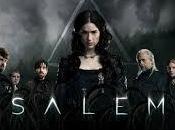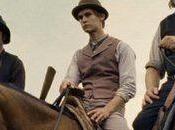Con la conclusione, anche nel nostro paese, della prima stagione di Arrow, trasmessa con successo da Italia 1, vi presentiamo in esclusiva una intervista a Gordon Verhuel, direttore della fotografia di alcuni episodi della serie targata The CW. Nella sua lunga carriera, Verhuel ha lavorato a numerosi serial tra cui sono da segnalare Fringe, Andromeda, Sanctuary e Smallville.

Hai lavorato a Smallville prima di approdare ad Arrow. Ci puoi descrivere quali sono le differenze sostanziali che hai affrontato nel lavorare a questi due serial, che si svolgono in due contesti differenti, la prima in una cittadina di campagna, la seconda in una metropoli? Come si riflette tutto questo nell’uso dei colori, dell’illuminazione e nei toni?
La prima e più importante differenza tra Smallville e Arrow è filosofica. Claek Kent ha superpoteri e viene da un altro pianeta. Arrow ha come protagonista un uomo che possiede abilità straordinarie, un obiettivo ed è ben addestrato. Quindi Smallville ha una premessa più fantasiosa, mentre Arrow è realistico. Non abbiamo quasi nessun effetto speciale, tutte le acrobazie e i combattimenti vengono realizzati più o meno come si vedono da una delle migliori squadre di stuntmen con cui io abbia mai lavorato. L’ambientazione in una grande città è per me sia una sfida che una fonte di soddisfazione. Ci ritroviamo sempre in location molto stimolanti, spesso sul tetto di un edificio, a filmare finché il sole non sorge. Filmiamo con la nuova telecamera Arri Alexa, quindi lo spazio di manovra è davvero mozzafiato e ci motiva a fare riprese notturne come non se ne erano mai viste prima. L’altro direttore della fotografia, Glenn Winter, che ha girato il pilot e mi ha coinvolto in questa avventura, è sorpreso come me da quanto i livelli della luce siano bassi in queste scene notturne.
Un direttore della fotografia deve dialogare con tutti. Registi, attori. Quale livello di collaborazione vi è stato con il cast di Arrow e con i registi? Quali direttive ricevevi e quali davi tu?
Con Arrow abbiamo avuto il piacere di lavorare con grandi registi e un cast ricco di talento. Anche i nostri produttori esecutivi/sceneggiatori Marc [Guggenheim] e Andrew [Kreisberg] ci hanno spinto al limite per realizzare un’esperienza cinematografica ancorata alla realtà. Ma l’obiettivo finale è che deve essere spettacolare, la regola è che “Cool Rules” e il risultato è che sono molto aperti a qualsiasi input che possa portare lo show ad un livello superiore. Siamo tutti stupefatti di come questo show continui a scriversi da solo, sono in pochi ad avvicinarsi anche solo lontanamente a ciò che noi facciamo ogni settimana. I nostri registi sono stupefatti dal nostro team e il supporto e la collaborazione che ricevono li aiuta a compiere dei miracoli in 9 giorni incredibilmente intensi.

Ho notato che in Arrow c’è una predominanza, in riprese esterne ma anche in interni, del verde. Anche appena abbozzato. Come avete lavorato per sottolineare questo elemento?
Di nuovo, la nostra paletta di colori è funzionale al fatto che le cose devono essere fermamente ancorate alla realtà. Non usiamo quasi mai colori teatrali, usiamo quelli che chiamiamo “colori ambientali”. Cosa possiamo trovare negli ambienti di Arrow? Il verde delle vecchie lampade al neon, l’arancione delle luci di strada. Tutte le scelte di colore riflettono la realtà di questo mondo e l’inquietudine in cui si ritrova Arrow.
Nelle scene di flashback sull’isola invece c’è l’assenza di colore, che aiuta ad amplificare il trauma che Oliver ha sofferto durante quel periodo.
Quali sono i tuoi punti di riferimento durante la lavorazione di un singolo episodio, quando devi trovare delle luminosità di un certo tipo?
Ogni nuovo episodio comporta sfide diverse e mi ingegno ogni volta per trovare qualcosa in tema con il mondo di Arrow ma vogliamo che la storia cresca e si sviluppi da un punto di vista visivo, così usiamo sempre nuove ed innovative camere e tecniche che ci aiutano ad espandere l’esperienza cinematica di Arrow. Parlando di cambiamento più nello specifico, alcuni script prevedono determinati approcci a determinate ambientazioni e ogni tanto avviene l’”happy accident” dove siamo costretti ad una determinata soluzione ad una circostanza a causa del tabellino di marcia, alla diponibilità delle locations, al meteo ecc. e ne usciamo con un approccio totalmente diverso rispetto a quello immaginato che però si rivela essere migliore rispetto all’idea originale. Devi essere in grado di pensare a mente fredda in queste situazioni ed essere molto elastico e adattabile, ma bisogna sempre e comunque avere un piano per affrontare queste evenienze.
Quali sono state le sfide principali che hai dovuto affrontare in Arrow?
Le sfide in Arrow sono state numerose. I ritmi sono molto serrati e le aspettative enormi. Normalmente lavoriamo 12-14 ore al giorno, spesso fino all’alba e la mole di lavoro è intensa ma eccitante. La sfida maggiore è provare a superare quanto fatto nel precedente episodio pur rimanendo ancorati alla realtà del nostro mondo di Arrow. Gli stunt e le sequenze di azione sono epiche in questo show. Generalmente questo tipo di scene vengono mandate ad una seconda unità, ma non è questo il caso: in Arrow è l’unità principale a girare tutto. Questo è fantastico perché significa che siamo in grado di portare la nostra qualità tecnica a questi elementi e penso che tutto ciò si possa vedere in un serial votato all’azione come questo. Il nostro nemico maggiore è il tempo, ci sono così tante cose che vorresti fare ma ad un certo punto il tempo a disposizione termina o il sole che sorge ci mette pressione per finire in fretta.
Quali strumenti e tecnologie utilizzi durante il tuo lavoro?
Con Arrow abbiamo abbracciato nuove camere e tecnologie. Come camera wise abbiamo usato 3 camere Alexa come main body. Abbiamo usato anche la Canon C300, 7D e Go Pro su basi standard. Usiamo spesso anche le gru Technocrane, Russian Arms, la WhartHog Camera Vehicle e di recente anche il Russian Segway per girare qualche scena spettacolare. E’ divertente usare questi attrezzi e scoprire nuovi modi di girare.
Hai lavorato all’episodio che ha visto l’esordio di Huntress. Hai usato qualche luce particolare per questo personaggio?
La Cacciatrice (Huntress) è stato un personaggio complicato sotto molti punti di vista. Il costume creato dal nostro talentuoso wardrobe designer è molto dettagliato ed ha una linea appariscente. Alcune scene riprese dal basso o con poca luce sembrano dargli ancora più potenza e rilevanza, la maschera e i suoi lunghi capelli neri poi le hanno anche dato un’aria mistica. Hai sempre provato a cercare qualcosa nei suoi occhi senza illuminarli troppo e quindi scacciando l’oscurità che è centrale per un personaggio come questo.
Quali sono i tuoi prossimi progetti?
In termini di progetti nuovi, non vedo l’ora di lavorare alla stagione 2 di Arrow e vedere dove ci porterà questo viaggio.
ENGLISH VERSION
You worked on Smallville before Arrow. Can you describe us which are the main differences you faced working on those two different tv series that take place in two totally different contexts, the first in a small town, the other in a big city? How does this reflects on colors, illumination, and tones?
The first and most important difference between Smallville and Arrow is philisophical. Clark Kent had super powers and came from another planet. Arrow is a man will extraordinary skills, purpose, and training. So where Smallville is more fantasy based Arrow is much more grounded in reality. We do almost no visual effects, all stunts and fight scenes are pulled off pretty much as you see by one of the best stunt teams I have ever worked with .The big city aspect of it is both very challenging and very fulfilling at the same time. We continually find ourselves in some very inspiring locations, often on the rooftops of building, shooting until the sun comes up. We are shooting on the new Arri Alexa camera so the latitude of the camera is breathtaking and makes shooting the huge scope of these night shoots possible in a way that was not really available before. The other DOP, Glenn Winter, who shot the pilot and invited me along on this adventure, is amazed as to me at how low the light levels are getting as we tackle these night locations.

A director of photography has to be in direct contact with everyone in the staff, from the directors to the actors. What is the level of collaboration you had with the cast of Arrow and the directors? Which guidelines you gave and which you received?
We have been blessed on Arrow to be working with great directors and a dedicated and talented cast. As well our executive producers/ writers Marc and Andrew, really push us in terms of delivering a cinematic experience that is grounded in reality. But the bottom line is that it must be amazing, the model is that “Cool Rules” and as a result they are very open to any input that may take the show to the next level. We are all amazed at how the show is continually outdoing itself, there are very few shows out there that even attempt to pull off what we do each week. Our directors are in awe of what a team we have in place here, and the support and collaboration they receive really helps them pull of miracles in 9 unbelievably intense days.
I noticed that in Arrow there is a preponderance- even just on a rough level- of the color green, both in outdoor and indoor scene. How did you manage to highlight this element?
Again, our colour palette matches our marching orders of keeping things firmly grounded in reality. We almost never use theatrical colours. We use what we refer to as environmental colours. What actually exists in these environments that Arrow inhabits? Green from old flourescents, Sodium Vapour (orange) from street lights. All the colour choices reflect the reality of this world and the struggle that Arrow finds himself in. There is also a lack of colour in all the Island flashback scenes, which helps to heighten the trauma of what Oliver suffered there.
On what do you usually focus when you work on an episode while you have to find a particular kind of light?
Each new episode brings it own challenges and I strive to bring something that is in keeping with our ‘Arrow world” but we want to be growing and developing this story visually. So we are always employing new and innovative cameras and techniques that let us expand the cinematic experience of “Arrow” In terms of specific looks it also changes, certain scripts take us down visual paths, some locations suggest certain approaches, and then sometimes it’s the “Happy Accident” where we we are presented with a set of circumstances where we are forced into a particular situation because of schedule, location availability, weather, etc., and we come up with a compete different approach which turns out to be more successful than our original idea. You have to be able to think on your feet in these situations and be very adaptable, but you still have to go in there with a plan.
Which was the challenges you had to face while working on Arrow?
The challenges of Arrow are numerous. The schedules are very tight and the expectations are huge. We usually do 12 – 14 hour days, often until dawn and the pace of the work is extremely intense but very exciting. The main challenge is trying outdo what we did the previous episode while still being true to the grounded reality of our “Arrow” world. The stunt and action sequences are epic on this show. Usually this gets sent off to a second unit but thats not the case on Arrow, main unit shoots everything. This is actually great because it means we are able to bring our A game to these important elements and I think it shows in this action orientated show. But the biggest enemy is “time”, there is so much you want to do but at a certain point the clock run out or the rising sun forces you to move on.
What kind of tools and technologies do you use in your work?
On “Arrow” we embrace new cameras and technologies. Camera wise we use 3 Alexa cameras as our main bodies.. We also use the Cannon C300, 7D, and Go Pro on regular basis. We often use Technocranes, Russian Arms, The WhartHog Camera Vehicle, and recently the Russian Segway to pull off some amazing shots. Its great to use these tools and constantly discover new shot making possibilities.

You worked on the episode that saw the debut of the Huntress. Did you use a particular light for that character?
The Huntress was a very complex character on a number of fronts. The costume which our talented wardrobe designer created is very detailed and has a striking silhouette. Certain low angles and certain low lighting situations seemed to give it the most power and presence. The mask and her long dark hair also brought a certain mystique. You always tried to see something in her eyes without flooding in too much light and thus taking away the darkness that was central to her character.
Can you tell us what are your future projects?
In terms of new projects, I am looking forward to Season 2 on Arrow and can’t wait to see where this great ride goes next.
Basata sul personaggio di Freccia Verde edito da DC Comics, Arrow è una serie creata da Greg Berlanti, Marc Guggenheim e Andrew Kreisberg e interpretata da Stephen Amell, Katie Cassidy, Colin Donnell, David Ramsey, Willa Holland, John Barrwoman, Susanna Thompson, Paul Blackthorne e Colin Salmon. La prima stagione della serie, già rinnovata per una seconda, è composta da 23 episodi. In USA è trasmessa dal network The CW, nel nostro paese da Italia 1.
Etichette associate:
In EvidenzaArrowCondividi:
Seguici su:
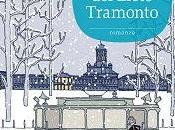
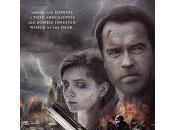
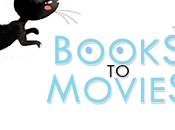
![[Focus On]: OCULUS.IL RIFLESSO MALE (Movie)](https://m21.paperblog.com/i/289/2894186/focus-on-oculusil-riflesso-del-male-movie-L-zfe1eo-175x130.jpeg)
